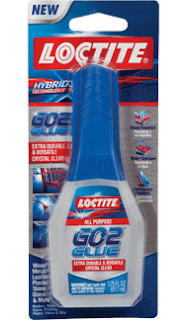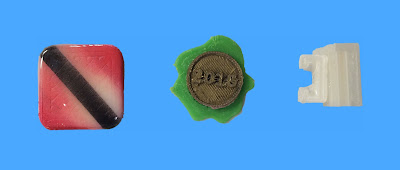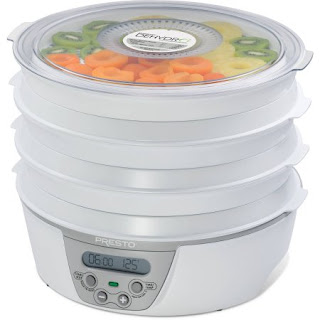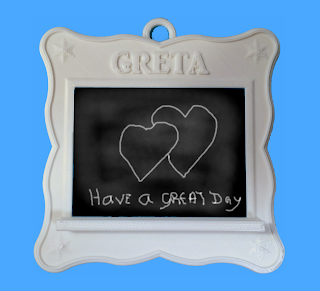Ironically, I wasn't actually looking for a glue for PLA when I came across one that works. I was looking for a clear coat for prints that have been colorized using alcohol marker ink. And, I suspected that I would find it in the form of a glue. I was right.
The great news is that it can be found in grocery store, hardware stores and places like Target or Walmart. It's called Loctite GO2 All-Purpose Glue.
 |
| Loctite GO2 Glue |
But, the added benefit was that Loctite GO2 also bonds PLA. Here are my 3 test samples.
 |
| Loctite GO2 As Clear Coat & Glue |
Sample 1: Loctite GO2 does not smear alcohol ink and is flexible
The Tough PLA color did not run and the material remains as flexible as it was before coating. I applied the glue by pouring it onto the item and smoothing with an artists brush. The brush was cleaned with alcohol after the application. What can't be conveyed by an image is the interesting feel of the coating after it's dry. It has a rubberized feel to it that provides some non-slip 'grip' that is interesting.
The glue dried crystal clear. So, it does make for a great top coat to protect the alcohol inks.
Sample 3: Loctite GO2 joined different materials.
The simulated wax seal is M3D's Tough 3D Ink and the simulated coin is M3D's Premium PLA. The bond does take a while to set (30 minutes) and was fully cured in 24 hours. I was able to accelerate that by putting all the test pieces in a food dehydrator for a few hours.
Sample 3: Loctite GO2 joined two PLA pieces.
This is really a big find for me. None of the normal cements designed for plastic models ever worked all that well when used with PLA. So, in the past, I usually turned to clear fingernail polish. It worked; but, never seemed to be a great solution. The cool thing about Loctite GO2 is that the glue, itself, is flexible after it cures. So, while the bond is tight, there is some capability for give at the point of connection.
The bond can be broken if too stressed, so if you are planning to build a large 3D printed PLA bridge, I'd make sure the glue was liberally applied. While not a completely perfect solution, it works better than anything else I have tried.
If you have a glue that works with PLA, I'd love to hear about it.




